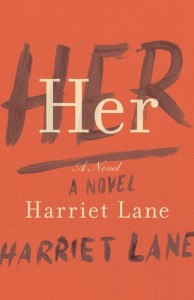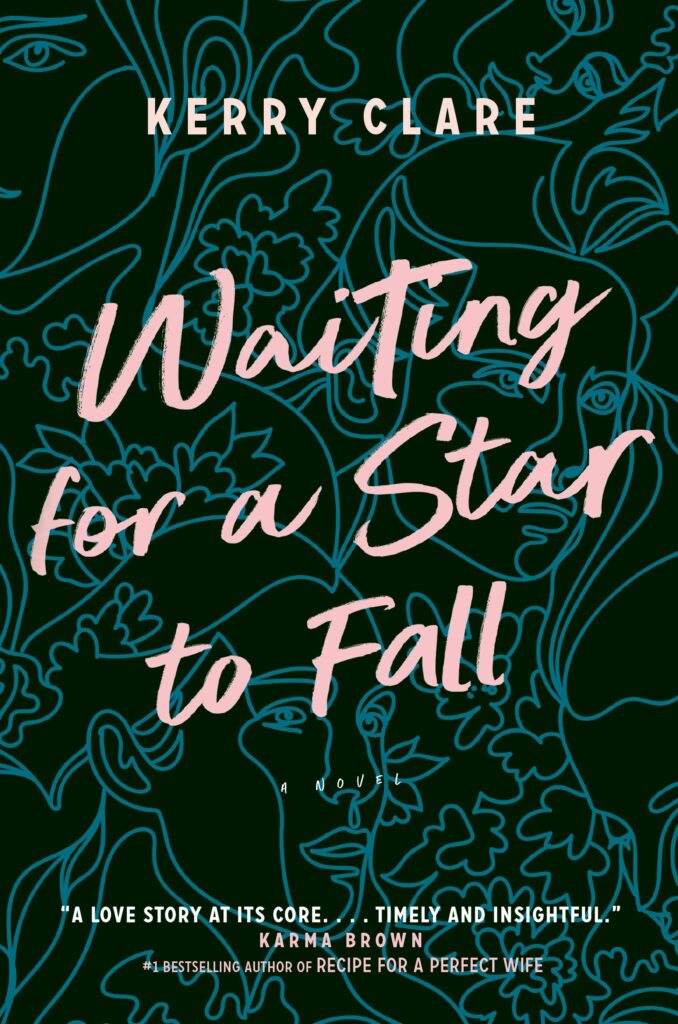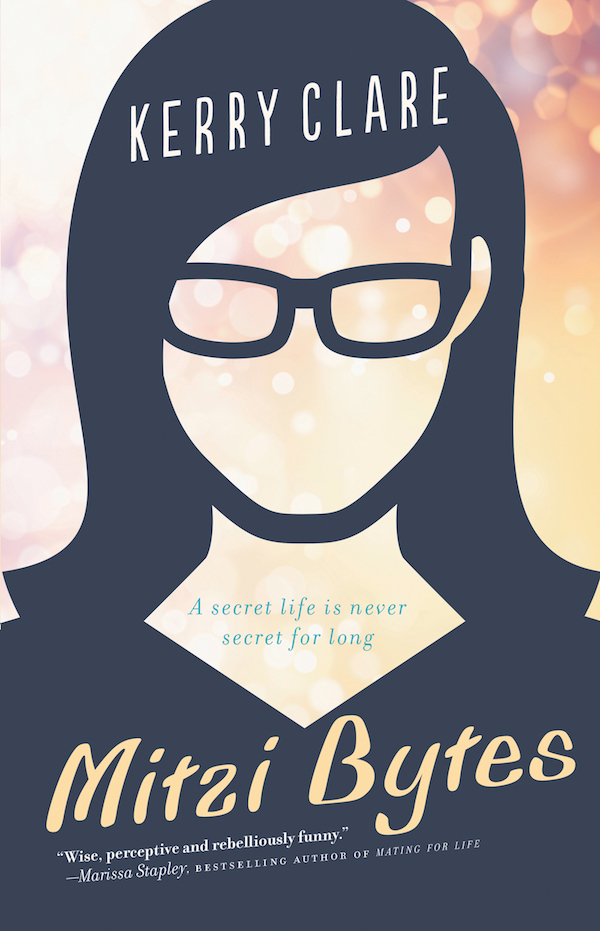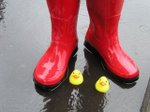January 28, 2015
The Inconvenient Indian by Thomas King
 “You see my problem. The history I offered to forget, the past I offered to burn, turns out to be our present. It may well be our future.” –Thomas King
“You see my problem. The history I offered to forget, the past I offered to burn, turns out to be our present. It may well be our future.” –Thomas King
Thomas King’s The Inconvenient Indian: A Curious Account of Native People in North America is a curious contender for the Canada Reads debates, which this year is mixing fiction and non-fiction for the first time. Its scope is outsized compared to the other books. It comes with a moral imperative so great that a reader might be shamed to offer up a different book instead, a book championed for, say, its aesthetic concerns. It’s a book that might be difficult to discuss in its own right, outside of its subject matter.
But let’s for just a moment do such a thing.
For in all my years of reading, I don’t know that I’ve ever read a more curious “curious account” of anything. A history whose narrator shrugs away any claims of authority, chronology abandoned, national borders ignored, a narrative tone that’s sarcastic and a bit snarly. Plus haunted by the spirit of King’s wife, Helen, much esteemed, offering her own feedback from somewhere in the background: give examples, don’t generalize, and other editorial suggestions. What is the historian who offers up lines like, “I don’t know. I wasn’t there”? King’s supposed insouciance, his humour, his edge—with wry understatement—all rhetorical devices. There is a begrudgingness here, King offering up a book his readers have done nothing to deserve except be ignorant. This history is painful and terrible, and to tell it all chronologically, straightforwardly would be to be writing the same thing over and over again. The way he’s done it, at least, King gets to have a little bit of fun.
“I never knew,” I said to my husband, when I finished reading this book on Sunday afternoon, “what they meant when they said that we stole their land.” I’d assumed it was in a general sense—Europeans arriving on these shores and planting a flag, the First Nations people displaced with that one gesture. What I never knew, and only learned from reading The Inconvenient Indian, is the way in which First Nations land has been stolen over and over again. First Nations people moved and moved again, and displaced and relocated. This in itself traumatic—I’d known about the Cherokee Trail of Tears from reading King’s novel Truth and Bright Water—but then there was more, one example being the General Allotment Act of 1887, which broke up Indian reservations into individual pieces. Though to divide that land evenly between its inhabitants would make for too much land per person, the government decided, so they came up with an arbitrary amount, split that, and the rest became surplus land—theirs. Or the golf club in Vancouver whose land came from the Musqueam Nation, via agents in Ottawa—the Musqueam never even saw the agreement—with a long-term lease far below value. Later, the government signed a deal with developer to turn 40 acres of Musqueam land into a subdivision, also at rock-bottom prices fixed without increases for decades. When the Musqueam were eventually able to raise the rents to market rate, the homeowners refused to pay and took the case to court.
I knew about Indian Residential Schools, a terrible tragedy whose effects are trickling down through generations. But I never knew that one in two children in residential schools lost their lives there. King asks, “What would have happened if the residential schools had been public schools instead? Schools in Toronto, San Francisco, Vancouver, New York? What would have happened if the children who were dying were White? What would have happened if one of them had been your child?/ Sure It’s a rhetorical question.” King also asserts that “tragedy” is the wrong term with which to describe the residential schools. “It suggests that the consequences of residential schools were unintended and undesired, a difficult argument to make since…the schools were national policy.”
The underlying argument in The Inconvenient Indian—when casinos and garbage dumps become rare economic opportunities for First Nation communities; when land and rivers on reserves is ravaged by industrial waste from corporate neighbours; when it’s argued that the Indian land wasn’t being “used” anyway; when Native people are seen as unable to manage themselves without government handouts, all the while “Air Canada, AIG, Bombardier, Halliburton, General Motors, and the good folks at Alberta’s Tar Sands Project manage on their own without relying on government handouts”—is that capitalism is the problem. King writes, “there is little chance that North America will develop a functional land ethic until it finds a way to overcome its irrational addiction to profit.”
And there is so much more—on racism, historical perceptions, First Nations men murdered by police, First Nations women murdered by… well, who knows who, because no one can be bothered to investigate, the history of the AIM and activism throughout the 1960s and 1970s, and Oka and Ipperwash, the dots connected, pieces fitting, a shocking context, the same patterns, disregard and abuse repeated over and over, a hundred years ago, a decade ago. Which is why history is a slippery thing here, and why some critics would prefer the past be forgotten altogether—it’s simpler. King writes, “Using this approach as a template, one could write a book about the United States dropping two atomic bombs on Japan without having to mention World War II.”
I was thinking about this as I read the newspaper on Saturday, an editorial about the death of a Native child after her parents had halted her chemotherapy. “So far, no one has stepped forward to appeal the decision [to halt the treatment], probably because of an oversensitivity to the native rights issues that the judge allowed to cloud what should been a simple decision to protect the life of a child.”
An oversensitivity to native rights issues.
Has there ever been such a thing?
Which is not to say that the death of the child is not tragic, that she should not have been protected, that there are any easy answers in this situations, that there are any easy answers at all. But it is a failure to acknowledge complexities that has always been the problem, a tendency to fit people into boxes, for the human part of the matter (humanness, with all its foibles) to be disregarded. For someone, like say Christie Blatchford writing about Caledonia, or whoever wrote that editorial, to think that some matters are simple, that the weight of history might be sloughed off altogether. Hence the reason King subverts history, authority, chronology in his book—this is a story that has to be told another way.
The Inconvenient Indian has been sitting on my shelf for three years. I bought it for my husband who is an immigrant and wanted context to what he was hearing about First Nations issues in the news. He read it but I hadn’t. I’d been meaning to get around to it, and am pleased that Canada Reads has provided me with the incentive to finally do so. (Though I do wish a book by First Nations woman writer had been on the list this year—I learned by a campaign in November that in its history, Canada Reads had never featured such a book. I’m going to make an effort to seek out books by First Nations women for myself this year.)
I do wonder if the other books selected for Canada Reads are going to be unfairly pitted against this one, if there will be an unequal distribution of importance—it seems obviously slated to win. Who’d argue that? But someone will, and I wonder too if that will seem to trivialize The Inconvenient Indian when that happens. It seems like potentially an awkward exercise. But if the point is that the book gets read, then I think it’s a good thing. For me it’s always been the reading more than the debate that’s been the chief appeal of Canada Reads anyway.
- Update: Check out this list of books by Canadian First Nations and Inuit women writers. Lots of great reading suggestions.
January 27, 2015
A Remarkable Cat
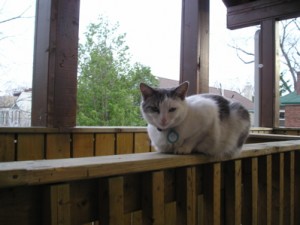 One day in 2008, not long after we’d moved into our apartment, my friend Rebecca came over, and a small grey and white cat walked in right behind her. “Do you know that cat?” Rebecca asked, not sure. It was her first visit to our new place. The cat seemed friendly enough, and remarkably at home. I checked her collar and saw that her address was next door, the other side of our semi-detached house, the home of our landlords. “That’s your cat?” I asked them the next time I saw them. “She likes to come visit,” they told us. “I hope you don’t mind.”
One day in 2008, not long after we’d moved into our apartment, my friend Rebecca came over, and a small grey and white cat walked in right behind her. “Do you know that cat?” Rebecca asked, not sure. It was her first visit to our new place. The cat seemed friendly enough, and remarkably at home. I checked her collar and saw that her address was next door, the other side of our semi-detached house, the home of our landlords. “That’s your cat?” I asked them the next time I saw them. “She likes to come visit,” they told us. “I hope you don’t mind.”
 We didn’t. I was thrilled to have a part-time cat. I had no wish to have a pet at all, but a part-time cat filled the little void in my heart, plus I didn’t have a baby then, but I wanted one. Georgina slept on my chest while I read. She used to come over when I came home for lunch, and sit in squares of sun on the floor and watch me eat. She napped on our bed. She hung out on our porch. At one point, she came down with a bizarre injury in which she had a hole in her side and had to have an operation. No one knew how it happened—perhaps a fight with another local cat? She did have a wild life, and a mysterious one. (There was a legend about the time our former downstairs neighbours were caring for her and she appeared on the roof of a house across the street, and refused to come down.) When she came home after her injury, we sent her a package of cat treats in the mail and signed the card, “Get well soon. From the cats of Brunswick Avenue.” I think we had a lot of time on our hands. The children next door were young then, and found this most intriguing. Apparently, when they’d brought the package in, Georgina heard the treats rattling in the package, and came bounding down from the third floor.
We didn’t. I was thrilled to have a part-time cat. I had no wish to have a pet at all, but a part-time cat filled the little void in my heart, plus I didn’t have a baby then, but I wanted one. Georgina slept on my chest while I read. She used to come over when I came home for lunch, and sit in squares of sun on the floor and watch me eat. She napped on our bed. She hung out on our porch. At one point, she came down with a bizarre injury in which she had a hole in her side and had to have an operation. No one knew how it happened—perhaps a fight with another local cat? She did have a wild life, and a mysterious one. (There was a legend about the time our former downstairs neighbours were caring for her and she appeared on the roof of a house across the street, and refused to come down.) When she came home after her injury, we sent her a package of cat treats in the mail and signed the card, “Get well soon. From the cats of Brunswick Avenue.” I think we had a lot of time on our hands. The children next door were young then, and found this most intriguing. Apparently, when they’d brought the package in, Georgina heard the treats rattling in the package, and came bounding down from the third floor.
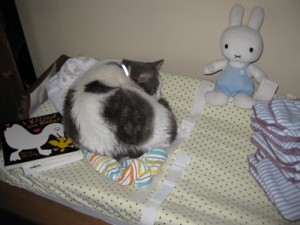 Georgina used to sleep in Harriet’s crib before she was born, and I have this photo of her asleep on Harriet’s change table on top of the sleeper she was due to wear home from the hospital upon her eventual arrival. After the baby was born, we saw Georgina less, partly because Harriet absolutely loved her and manhandled her and would end up with scratches on her face. But she was still our part-time cat, which meant our girl never noticed she didn’t have a pet at all, and that we never had to pay the vet bills as Georgina’s health problems began to mount. Two years ago, we went over to say good-bye to Georgina, whose kidneys and heart were failing. Though that she didn’t die until this afternoon says something about this most amazing cat who thoroughly used up every one of her nine lives. It was always a pleasure to hear her scratching at the door, and we’re all really going to miss her.
Georgina used to sleep in Harriet’s crib before she was born, and I have this photo of her asleep on Harriet’s change table on top of the sleeper she was due to wear home from the hospital upon her eventual arrival. After the baby was born, we saw Georgina less, partly because Harriet absolutely loved her and manhandled her and would end up with scratches on her face. But she was still our part-time cat, which meant our girl never noticed she didn’t have a pet at all, and that we never had to pay the vet bills as Georgina’s health problems began to mount. Two years ago, we went over to say good-bye to Georgina, whose kidneys and heart were failing. Though that she didn’t die until this afternoon says something about this most amazing cat who thoroughly used up every one of her nine lives. It was always a pleasure to hear her scratching at the door, and we’re all really going to miss her.
What I am going to miss the most though is how she used to sit outside on our garden wall, and how when the windows were open in the summer, we’d hear the people outside going by stop to talk to her. Unaware that we could hear their cat murmurings, as they rubbed behind her ears, and spoke in a goo goo voice. And then someone else would come along. “What a sweet cat,” the second person would say, and then the pair would get to talking, conversations drifting upstairs to us. Strangers meeting in the street, people reaching out their fellow human beings, someone leaning down to pat a cat on the wall: all of these signs that there is goodness at the heart of the world.
I’m going to miss that.
I don’t think you can say this about every cat, but Georgina made the city a better place.
January 27, 2015
Serendipity, Family Literacy and Animal Masquerade
 I don’t know that a family can enforce literacy as much as create the space to let a love of reading just happen. Serendipity plays such a role in it all, as it does whenever anybody discovers a great book. I was thinking about this tonight as I was reading to Harriet from the big pile of books we signed out of the library this afternoon. I was reading Animal Masquerade by Marianne Dubuc, which has been lauded by the likes of Leonard Marcus AND Julie Booker. I’d never read it before, and was enjoying it, and so was Harriet, the animals in disguise quite funny and a twist every now and again but never quite where you’d expect it. And then Iris wandered in, and climbed up beside us, and Stuart followed soon after, intrigued by the sound of this strange book in which a starfish dresses up as a panther. And two thirds of the way in, we were all in love with the story, finding it wonderful and hilarious, all of us perhaps for very different reasons, but regardless, it worked. It’s hard to find a book that hooks 4 people whose ages range from 1 to 35, but this one did, and it was a wonderful moment. The perfect way to mark Family Literacy Day, and I couldn’t have planned it better if I’d tried.
I don’t know that a family can enforce literacy as much as create the space to let a love of reading just happen. Serendipity plays such a role in it all, as it does whenever anybody discovers a great book. I was thinking about this tonight as I was reading to Harriet from the big pile of books we signed out of the library this afternoon. I was reading Animal Masquerade by Marianne Dubuc, which has been lauded by the likes of Leonard Marcus AND Julie Booker. I’d never read it before, and was enjoying it, and so was Harriet, the animals in disguise quite funny and a twist every now and again but never quite where you’d expect it. And then Iris wandered in, and climbed up beside us, and Stuart followed soon after, intrigued by the sound of this strange book in which a starfish dresses up as a panther. And two thirds of the way in, we were all in love with the story, finding it wonderful and hilarious, all of us perhaps for very different reasons, but regardless, it worked. It’s hard to find a book that hooks 4 people whose ages range from 1 to 35, but this one did, and it was a wonderful moment. The perfect way to mark Family Literacy Day, and I couldn’t have planned it better if I’d tried.
January 27, 2015
Loving the Difficult
 “In a time of cutbacks to services for women and children, for the arts, the difficulties faced by young mothers today who also want to write are enormous. But they do have, as generations before them didn’t, literary mothers who have been mothers themselves and given us a literature richer for that experience. They have transcended or changed the meaning of “women’s literature.” Canada’s voice in world literature is, as often as not, a women’s voice, a mother’s voice, now being joined by the voices of women around the world.” –Jane Rule, “Our Mothers,” from Loving the Difficult, which I finished reading last night while overlooking the swimming pool observing my daughter’s bizarre inability to float.
“In a time of cutbacks to services for women and children, for the arts, the difficulties faced by young mothers today who also want to write are enormous. But they do have, as generations before them didn’t, literary mothers who have been mothers themselves and given us a literature richer for that experience. They have transcended or changed the meaning of “women’s literature.” Canada’s voice in world literature is, as often as not, a women’s voice, a mother’s voice, now being joined by the voices of women around the world.” –Jane Rule, “Our Mothers,” from Loving the Difficult, which I finished reading last night while overlooking the swimming pool observing my daughter’s bizarre inability to float.
I liked this book a lot, although overlap between essays was a bit repetitive, and some were far more insightful than others. I was intrigued by details of Rule’s childhood in California, details that reminded me of Joan Didion’s biography and autobiographical essays—they are near contemporaries. Their writing styles are not the same, but they seem to have a similar eye on the world. I’d be interested to read Rule’s posthumous autobiography, Taking My Life, to see how it might connect with Didion’s Where I Was From. I also liked the book as a piece of swim-lit—Rule was a lifeguard throughout her life, and one of her final essays on her pool (yes!) is one of the very best in the book. Other good pieces were on grief, losing her partner of many decades, on gay marriage (“You be normal, or else…”), on writing, on writing and money, a piece on parallels between being a lesbian and being left-handed, and so many passages that begged to be underlined.
January 26, 2015
Not Baklava
 This is not a post apologizing for a lack of updates. If you’ve ever learned anything about blogging from me, it’s probably that such posts are a waste of everybody’s time. What this post is, however, is an apology for my inability to blog while knitting. I can read while knitting; I can do this like a champion. I hold the book open with my feet, or employ my bookstand, and I basically knit this entire balaclava this way, while reading The Inconvenient Indian (and probably looked a bit curious and occupied as I did this during the hour I was waiting for Harriet to finish her dance class on Saturday). I have my limits though: I cannot read while knitting AND drink my tea, which is terrible. And I have yet to figure out how to knit and blog, which is why I have a completed balaclava to show for my Sunday evening instead of a freshly minted blog post. Alas, I think I made the right call, as it’s freezing this morning, and full facial covering goes a long long way.
This is not a post apologizing for a lack of updates. If you’ve ever learned anything about blogging from me, it’s probably that such posts are a waste of everybody’s time. What this post is, however, is an apology for my inability to blog while knitting. I can read while knitting; I can do this like a champion. I hold the book open with my feet, or employ my bookstand, and I basically knit this entire balaclava this way, while reading The Inconvenient Indian (and probably looked a bit curious and occupied as I did this during the hour I was waiting for Harriet to finish her dance class on Saturday). I have my limits though: I cannot read while knitting AND drink my tea, which is terrible. And I have yet to figure out how to knit and blog, which is why I have a completed balaclava to show for my Sunday evening instead of a freshly minted blog post. Alas, I think I made the right call, as it’s freezing this morning, and full facial covering goes a long long way.
It all went a bit wrong, however, once the balaclava was finished. It was 11:30 and everybody was asleep, but I was too excited to keep my success to myself. So I put the balaclava on myself and ran upstairs to wake up Stuart and show him. And I didn’t realize until I’d shaken him awake that it might be unnerving to be pulled from sleep in a darkened room by someone wearing a balaclava… The look of terror in his eyes was like nothing I’ve ever seen before. This morning I tried to reason with him: You knew your spouse was downstairs nearly finished knitting a balaclava. Surely it would be a crazy coincidence if the balaclava-wearer before you was somebody different?
But he insisted such rationales were beyond his mental capacity at that time. He is still a wee bit traumatized.
January 23, 2015
On rereading Ellen in Pieces, and other things
 My book club met last night to discuss Ellen in Pieces, which I’d been looking forward to because I’ve got feelings about this book. I reread it last weekend, and was delighted to find I enjoyed it just as much and came away with a deeper appreciation of the novel’s structure. It’s a novel that’s slightly disorienting to encounter the first time, but to read it again, you get to look around a bit more. It was fascinating to see signs of Ellen’s eventual fate embedded in the text from the very beginning. I read the chapters from other characters’ perspectives differently too—the first time, I’d been consumed by trying to figure out how these other stories related to Ellen’s, whereas this time, the connections seemed stronger and more straightforward. The most devastating moment in the whole book continues to be the ending to “Ellen-Celine, Celine-Ellen”, which I’ve read for the third time now and the effect hasn’t lessened at all. Anyway, this time the novel seemed a bit easier to get lost inside and wander around a bit it. It is definitely the kind of book that is made for rereading.
My book club met last night to discuss Ellen in Pieces, which I’d been looking forward to because I’ve got feelings about this book. I reread it last weekend, and was delighted to find I enjoyed it just as much and came away with a deeper appreciation of the novel’s structure. It’s a novel that’s slightly disorienting to encounter the first time, but to read it again, you get to look around a bit more. It was fascinating to see signs of Ellen’s eventual fate embedded in the text from the very beginning. I read the chapters from other characters’ perspectives differently too—the first time, I’d been consumed by trying to figure out how these other stories related to Ellen’s, whereas this time, the connections seemed stronger and more straightforward. The most devastating moment in the whole book continues to be the ending to “Ellen-Celine, Celine-Ellen”, which I’ve read for the third time now and the effect hasn’t lessened at all. Anyway, this time the novel seemed a bit easier to get lost inside and wander around a bit it. It is definitely the kind of book that is made for rereading.
Plus, the book club liked it too, and it made for interesting discussion. And we got to eat blintzes, which I made because they’re in the book, even though I didn’t know what they were. It turned out they were delicious. Good to know.
 What else have I been reading lately? I read Anne Enright’s 2000 novel What Are You Like?, which had been sitting on my shelf for awhile. I started off in love with the stunning sentences, and then grew frustrated with the novel’s fragmentation (and I think I get bored with most novels at the point at while the mentally ill protagonist starts carving symbols into her legs). But then it unfolded in the most marvellous conclusion, and I saw that I should have had faith in Enright all along. The story of one woman’s unravelling via her pregnancy reminded me of Emily Perkins’ A Novel About My Life, which I feel as though I need to read again.
What else have I been reading lately? I read Anne Enright’s 2000 novel What Are You Like?, which had been sitting on my shelf for awhile. I started off in love with the stunning sentences, and then grew frustrated with the novel’s fragmentation (and I think I get bored with most novels at the point at while the mentally ill protagonist starts carving symbols into her legs). But then it unfolded in the most marvellous conclusion, and I saw that I should have had faith in Enright all along. The story of one woman’s unravelling via her pregnancy reminded me of Emily Perkins’ A Novel About My Life, which I feel as though I need to read again.
 Speaking of reading again, I pulled Bronwen Wallace’s People You’d Trust Your Life To off the shelf, which is a book that everyone should return to again and again. I’d read part of it while I was waiting for Iris to be born, so now the book is all tied up in that kind of nostalgia. I think that the book was a strong relationship to Adderson’s Ellen in terms of its masterful depiction of actual life (which happens to belong to a woman) and flawed, larger-than-life characters. But it also occurred to me how somebody ought to write an essay on Bronwen Wallace and Grace Paley as literary companions. Their works speak to each other, and are also unflinching in their politics. Good at titles too—I think that Wallace’s title sounds like a Paley one. And that Faith Darwin would have had a lot to talk about had she encountered any of Bronwen Wallace’s characters in the playground.
Speaking of reading again, I pulled Bronwen Wallace’s People You’d Trust Your Life To off the shelf, which is a book that everyone should return to again and again. I’d read part of it while I was waiting for Iris to be born, so now the book is all tied up in that kind of nostalgia. I think that the book was a strong relationship to Adderson’s Ellen in terms of its masterful depiction of actual life (which happens to belong to a woman) and flawed, larger-than-life characters. But it also occurred to me how somebody ought to write an essay on Bronwen Wallace and Grace Paley as literary companions. Their works speak to each other, and are also unflinching in their politics. Good at titles too—I think that Wallace’s title sounds like a Paley one. And that Faith Darwin would have had a lot to talk about had she encountered any of Bronwen Wallace’s characters in the playground.
What else? I am knitting balaclavas for my children, and enjoying knitting and purling so very much. We are watching season 2 of Broadchurch. I loved Andrew Pyper’s new novel, The Damned, coming next month. And I’m now reading Thomas King’s A Short History of Indians, and finding it curious, fascinating and horrifying. It’s a really peculiar book. So glad to be reading it finally.
January 20, 2015
Delighted to be excited about Canada Reads
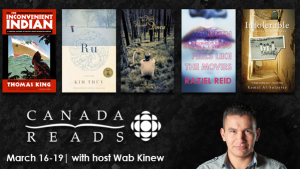 Canada Reads hasn’t been so high on my radar, and my reaction to this morning’s announcement took me by surprise. I am really delighted to be excited about this year’s line-up, and to finally interrupt my incredible streak of being a Canada Reads killjoy. (I think it’s been about five years now.) I still don’t know why a book has to break a barrier, or what that even means, but I was pleased to see that the public voting component of the campaign was not so prominent this year (and it seems like authors didn’t feel the pressure to push themselves as much, which was refreshing). I wasn’t crazy about the old host even before it all fell out, so I am pleased by the fresh start of a new one who’s already demonstrated his Canada Reads chops. So I’m back in the game, and mostly, I am thrilled that the list is a selection of books that I’m really excited to read—this is the whole point. There are two books in translation, two books by great small presses, the Thomas King book that’s sitting our shelves (it’s my husband’s) but I haven’t read yet. In fact, I haven’t read any of them yet, but I ordered the other four from the Bob Miller Book Room this morning. I am excited for them to arrive, and to start to read The Inconvenient Indian tonight. I’ll be blogging about the books over the next month, and I am excited about this also. When I first participated in Canada Reads in 2009, I met readers online who’ve been my friends ever since then. I hope some of them will be reading along too. And you too? Looking forward to it.
Canada Reads hasn’t been so high on my radar, and my reaction to this morning’s announcement took me by surprise. I am really delighted to be excited about this year’s line-up, and to finally interrupt my incredible streak of being a Canada Reads killjoy. (I think it’s been about five years now.) I still don’t know why a book has to break a barrier, or what that even means, but I was pleased to see that the public voting component of the campaign was not so prominent this year (and it seems like authors didn’t feel the pressure to push themselves as much, which was refreshing). I wasn’t crazy about the old host even before it all fell out, so I am pleased by the fresh start of a new one who’s already demonstrated his Canada Reads chops. So I’m back in the game, and mostly, I am thrilled that the list is a selection of books that I’m really excited to read—this is the whole point. There are two books in translation, two books by great small presses, the Thomas King book that’s sitting our shelves (it’s my husband’s) but I haven’t read yet. In fact, I haven’t read any of them yet, but I ordered the other four from the Bob Miller Book Room this morning. I am excited for them to arrive, and to start to read The Inconvenient Indian tonight. I’ll be blogging about the books over the next month, and I am excited about this also. When I first participated in Canada Reads in 2009, I met readers online who’ve been my friends ever since then. I hope some of them will be reading along too. And you too? Looking forward to it.
January 19, 2015
Born Out of This by Christine Lowther
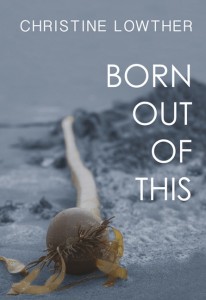 Christine Lowther’s essay collection, Born Out of This, is a wild book about life on the margins, in terms of geography, culture, and environmental activism. It also reads like notes in a margin, rich with references to literary texts, song lyrics, poetry (in particular, works by Lowther’s mother, the poet Pat Lowther), and musings on life and nature, the view from her window. Which is not just any window. Christine Lowther makes her home on a house float off the Clayoquot Sound, on the west coast of Vancouver Island, anchored just off shore. A greenhouse sits on an accompanying float, where bees buzz and somehow slugs appear. After the pleasure of reading Sarah Henshaw’s The Bookshop That Floated Away last month, I was pleased to encounter another woman who makes her life on the water. And what a life it is, Lowther partaking in the labours required to keep her house maintained and sound, commuting to work via kayak (and later, motorboat), watching wolves from her deck, swimming with a seal, and (yes) shitting in a bucket. She writes wonderfully about her views of nature, of being immersed in it and still apart from it at once, about the complex and difficult relationships between humans and wild things, between people and place. She writes about the freedom and claustrophobia of rural life, and also about how her idyllic surroundings are not so at odds with her punk roots: “if anyone thinks it’s not punk to live out in nature they should visit during a storm.” Nature is teeming too with death as much as it’s full of life, the opening piece in the collection presenting a stream choked with the bodies of dead salmon, though it’s not strictly a system of binaries: “This landscape of gore nourishes and fertilizes the trees and berry bushes.” And so too is death a shadow in Lowther’s own life; in “Gifts from Lands So Far Apart,” she explores the ways in which the loss of mother was connected to landscape, and this loss subtly haunts the rest of the collection. (The following essay begins: “An infant harbour seal cries for its mother…”) Lowther also explores the roots of her own environmental and political activism, her essay, “We Tremble in Response: Famished for Grief,” an excellent complement to Nancy Lee’s recent novel The Age, both works exploring Vancouver in the early 1980s and a sense of inevitable catastrophe in the nuclear age, the sitting perched on the edge of the world in more ways than just one. Other essays, about community gardening in Vancouver and wildlife in the city, underline Lowther’s connections between here and there, her principle that the rural and urban are not so much at odds, and that indeed their sensibilities mingle.
Christine Lowther’s essay collection, Born Out of This, is a wild book about life on the margins, in terms of geography, culture, and environmental activism. It also reads like notes in a margin, rich with references to literary texts, song lyrics, poetry (in particular, works by Lowther’s mother, the poet Pat Lowther), and musings on life and nature, the view from her window. Which is not just any window. Christine Lowther makes her home on a house float off the Clayoquot Sound, on the west coast of Vancouver Island, anchored just off shore. A greenhouse sits on an accompanying float, where bees buzz and somehow slugs appear. After the pleasure of reading Sarah Henshaw’s The Bookshop That Floated Away last month, I was pleased to encounter another woman who makes her life on the water. And what a life it is, Lowther partaking in the labours required to keep her house maintained and sound, commuting to work via kayak (and later, motorboat), watching wolves from her deck, swimming with a seal, and (yes) shitting in a bucket. She writes wonderfully about her views of nature, of being immersed in it and still apart from it at once, about the complex and difficult relationships between humans and wild things, between people and place. She writes about the freedom and claustrophobia of rural life, and also about how her idyllic surroundings are not so at odds with her punk roots: “if anyone thinks it’s not punk to live out in nature they should visit during a storm.” Nature is teeming too with death as much as it’s full of life, the opening piece in the collection presenting a stream choked with the bodies of dead salmon, though it’s not strictly a system of binaries: “This landscape of gore nourishes and fertilizes the trees and berry bushes.” And so too is death a shadow in Lowther’s own life; in “Gifts from Lands So Far Apart,” she explores the ways in which the loss of mother was connected to landscape, and this loss subtly haunts the rest of the collection. (The following essay begins: “An infant harbour seal cries for its mother…”) Lowther also explores the roots of her own environmental and political activism, her essay, “We Tremble in Response: Famished for Grief,” an excellent complement to Nancy Lee’s recent novel The Age, both works exploring Vancouver in the early 1980s and a sense of inevitable catastrophe in the nuclear age, the sitting perched on the edge of the world in more ways than just one. Other essays, about community gardening in Vancouver and wildlife in the city, underline Lowther’s connections between here and there, her principle that the rural and urban are not so much at odds, and that indeed their sensibilities mingle.
January 14, 2015
Her by Harriet Lane
UPDATE: I can’t believe I forgot to note the extraordinary ends to which Lane uses the sinister implications of classic children’s literature, including Goodnight Moon and “James James Morrison Morrison Weatherby George Dupree”. So very good.
There is such a descriptor as sippy-cup sinister.
“I’m reading a terrifying book about a woman with a newborn,” I told my husband, who went pale then, because a woman with a newborn is the most terrifying thing he’s ever known.
“I’m tired of female pain and also tired of people who are tired of it,” write Leslie Jamison in “Grand Unified: Theory of Female Pain,” from The Empathy Exams, and I sometimes feel similarly about the reading of the burdens of motherhood.
It’s a burden documented in vivid detail in Her, the second novel by journalist Harriet Lane. The novel is a mash-up, one scene after another presented from two points of view. One from Emma, recently a mother of two, in her late thirties, struggling to get the stroller up the steps as her three-year-old clamours for her attention, and the baby cries, and she contemplates her life, wondering where her once-self—a successful journalist, happy and carefree—has got to. And then the other, from Nina, who spies Emma from a distance, knows her from long ago, and becomes determined to work her way into the other woman’s life to enact some form of revenge.
To Emma, hoever, Nina—a successful painter, her own daughter nearly grown—is a saviour, always turning up at the right time, offering Emma exactly what she needs, providing a glimpse of the world outside, of the life she’d like to have. Nina is a respite from the drudgery of a schedule Emma describes as full of tasks all both so urgent and tedious, breaking the day into useless pieces, rendering the whole thing as just scraps. But why is Nina so interested in her? It’s a nagging question, but one that Emma pushes to the back of her mind, which is already overwhelmed by lack of sleep, stress, financial worries, marital strife, and general ennui. She’s so vulnerable, which Nina recognizes instantly, and realizes she can prey on.
Which makes Her so compelling, so beyond those other narratives which tire me whose only virtue is their honesty, is that the truths revealed about new motherhood are just the starting point. From here, Lane has created a psychological thriller so convincing in its reality, so ominous in its mundanity, so sippy-cup sinister in a manner I last recall reading in Emily Perkins’ excellent 2008 book, A Novel About My Wife.
Nina gets closer and closer to Emma, welcomed into her home, caring for her children, and while we know along she has nefarious intentions—presented in the alternating chapters which, like Emma’s, are written in first-person—we don’t know why she’s out to exact revenge from Emma, who doesn’t remember her at all. We don’t know either which form her revenge will take, though as the novel progresses, indicators emerge, signs and signals that are so terrifying, all hurtling towards the novel’s very end, which is completely and utterly devastating. Not to mention amazing. But don’t say I didn’t warn you.
It’s a page-turner, but the reader will be slowed by Lane’s prose, the pitch-perfect imagery and descriptions, which are to be savoured. By the nuance too, suggesting the motherhood (and everything) is a many-sided reality after all. And the reader will be chilled by Lane’s suggestion that danger lurks even in the safest of places, that the most heightened maternal vigilance might never be enough.
January 13, 2015
Reading Green Knowe
 Throughout November we were reading Tom’s Midnight Garden at bedtime, which is one of a handful of favourite books from my childhood that hold up just as well. We all enjoyed it, though perhaps Stuart the most because it was his first encounter with the book. I was pleased because I think Harriet mostly grasped the time travel storyline, or some of it. I had read her Margaret Laurence’s The Olden Days Coat two Christmases ago, and she didn’t understand it at all. “There’s this thing called the present,” I was trying to explain, and she was baffled. Interesting too because while she now understands the concept of time, she actually remembers none of that time—anything that happened when she was three and back is kind of lost to us. We reread My Father’s Dragon last week, which I read her when she was three, and she had no recollection. I wonder if you have to have your own history before you understand that there is such a thing as history, and if a prerequisite to having a history is having begun to lose it.
Throughout November we were reading Tom’s Midnight Garden at bedtime, which is one of a handful of favourite books from my childhood that hold up just as well. We all enjoyed it, though perhaps Stuart the most because it was his first encounter with the book. I was pleased because I think Harriet mostly grasped the time travel storyline, or some of it. I had read her Margaret Laurence’s The Olden Days Coat two Christmases ago, and she didn’t understand it at all. “There’s this thing called the present,” I was trying to explain, and she was baffled. Interesting too because while she now understands the concept of time, she actually remembers none of that time—anything that happened when she was three and back is kind of lost to us. We reread My Father’s Dragon last week, which I read her when she was three, and she had no recollection. I wonder if you have to have your own history before you understand that there is such a thing as history, and if a prerequisite to having a history is having begun to lose it.
Anyway, Tom’s Midnight Garden was lovely, and meaningful not only because I loved it as a child, but because it was the second book I read after Harriet’s birth, so to bring back memories of that time with a girl who seems so big now was remarkable. That she’s getting the time travel thing also means that we will be able to read Charlotte Sometimes by Penelope Farmer, which I am so looking forward to—I want to get the New York Review Edition. And at the back of Tom’s… was (in addition to an ad to join the Puffin Club, which I kept trying to join as a child, but I was sending in offers from the back of decades-old books so it never worked) listings of other Puffin books we might like. Including Lucy M. Boston’s The Children of Green Knowe.
I never read The Children of Green Knowe as a child, but received it as a gift about ten years ago, and read it then. I didn’t really get it. But I kept my copy of the book because it had been a gift, and because so many people are crazy about it—I decided there had to be more to it. It seemed in keeping with some of the themes of Tom’s Midnight Garden, the Puffin people thought we’d like it after all, and it’s a Christmas book and this was at the beginning of December. So I proposed we read it en-famille, post-Tom and we did, and it was a remarkable success. For me, in particular. For it seems a book that was meant to be read aloud, and in pieces, rather than plowed through like something with a plot. Reading it this way, I was able to appreciate its magic, its weirdness, and we were all quite struck by its atmosphere.
And it reminded me of the thing that children’s books have taught me about literature and books in general—that there is no such thing as “the text”. The text is ever changing, and its effects depend on myriad factors—the weather out the window, the plushness of a chair, whether or not the reader is awaiting test results. Children’s books, which we read over and over again like no other kind of book, have taught me to ever-undermine my (and any) literary authority. The number of times I’ve flipped through a picture book dismissively, and then sat down to read it with Harriet or Iris, and their appreciation has to directed me to what the book is all about, to what I may have missed the first time. There are bad books for sure, but so often there are great books but I’m just reading them wrong. So what a pleasure is rereading then, for the chance to finally get it right.
